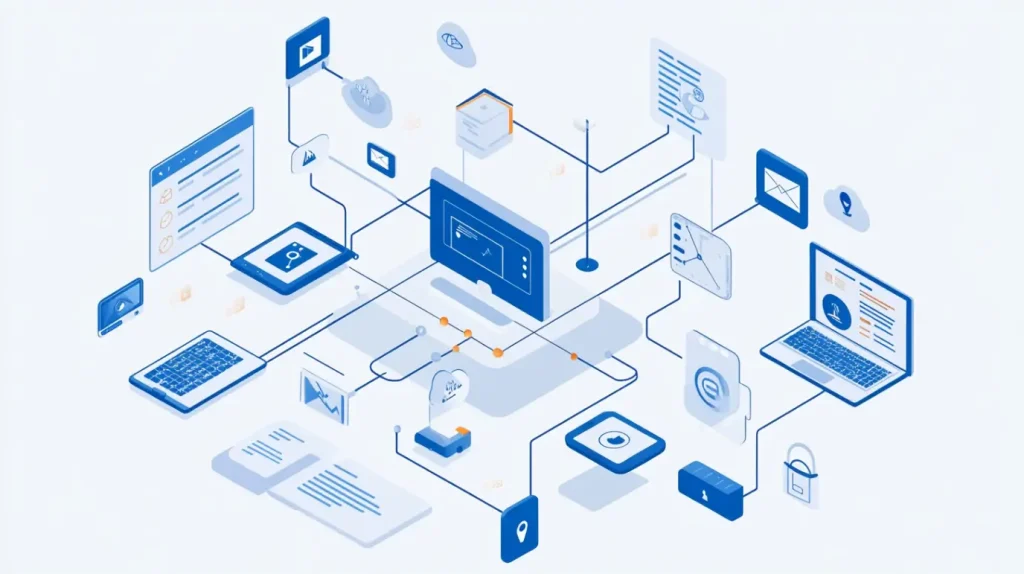Do you ever feel like you’re stuck in a loop, doing the same tasks over and over, or that some processes just take way too long and cause unnecessary stress? There’s a better way! It’s called workflow optimization, and it’s all about making the way you work smoother, faster, and more effective.
This guide will break down what workflow optimization means in simple terms, show you its benefits with real-world examples, and give you easy steps to start streamlining your own tasks and projects.
What Exactly is a Workflow?
A workflow is simply the series of steps or actions you take to complete a specific task or project from start to finish. It could be something simple like making your morning coffee, or more complex like launching a new product, onboarding a new employee, or even writing and publishing an article.
And What is Workflow Optimization?
Workflow optimization is the process of looking at your existing workflows, identifying areas for improvement, and then making changes to make those steps more efficient, less error-prone, and generally better. Think of it as finding the smartest and most direct route to get things done.
Why Optimize Your Workflows? The Awesome Benefits:
Taking the time to improve how you work can lead to some fantastic results:
- Massive Time Savings & Increased Productivity:
- How it helps: Eliminates wasted steps and speeds up processes.
- Example: Imagine your team manually searches for specific client files across different folders every time they need them. Optimization: Creating a standardized, clearly labeled digital folder structure and a central document index. Result: Everyone finds files in seconds, not minutes, freeing up significant time for more important work.
- Reduced Errors & Improved Quality of Work:
- How it helps: Standardizes processes and introduces checks.
- Example: When preparing a monthly report, team members sometimes forget to include certain data points. Optimization: Creating a detailed checklist that outlines every step and data point required for the report. Result: Reports are consistently accurate and complete, improving their reliability.
- Lower Stress & Less Frustration:
- How it helps: Creates clarity and predictability.
- Example: Handling customer complaints without a clear process can be chaotic and stressful for your team. Optimization: Developing a standard workflow for complaint resolution, including steps for logging the complaint, assigning it, investigating, and communicating with the customer. Result: Less confusion, faster responses, and reduced stress for everyone involved.
- Better Team Collaboration & Communication (if applicable):
- How it helps: Ensures everyone knows their role and the status of tasks.
- Example: A team struggles with knowing who is working on what for a project, leading to duplicated effort or missed deadlines. Optimization: Implementing a simple project management tool where tasks are assigned, deadlines are set, and progress is tracked transparently. Result: Improved coordination, accountability, and smoother project flow.
- Increased Overall Efficiency & Potential Cost Savings:
- How it helps: Streamlines operations and reduces wasted resources.
- Example: Manually sending out appointment reminder emails one by one takes a lot of administrative time. Optimization: Using an automated scheduling tool that sends out reminders automatically. Result: Significant time saved, fewer missed appointments, and potentially reduced need for dedicated administrative staff for this task.
Simple Steps to Optimize Your Workflows:
You don’t need to be a process guru to start optimizing. Follow these steps:
- Identify & Map Your Current Workflow:
- What to do: Choose a task or process you want to improve. Write down or draw out every single step involved from the very beginning to the very end. Be detailed!
- Example: Mapping the workflow for “Publishing a New Blog Post” might include: Idea Generation -> Research -> Outline -> Draft Writing -> Editing -> Image Creation -> SEO Review -> Formatting -> Scheduling -> Promotion.
- Analyze & Find the Bottlenecks or Pain Points:
- What to look for:
- Which steps take the most time?
- Where do errors frequently occur?
- What steps are frustrating or cause delays?
- Are there any redundant or unnecessary steps?
- Where does work pile up waiting for someone else?
- Example (Blog Post Workflow): You might find that “Image Creation” is a major bottleneck because it relies on one busy person, or that the “SEO Review” is often rushed and inconsistent.
- What to look for:
- Redesign & Improve the Workflow:
- Brainstorm solutions: How can you address the issues found?
- Eliminate: Can any steps be completely removed without negatively impacting the outcome?
- Simplify: Can any complex steps be broken down or made easier?
- Automate: Can technology take over any manual, repetitive steps? (e.g., using templates, scheduling tools, software rules).
- Reorder: Would changing the sequence of steps make it more logical or efficient?
- Standardize: Can you create standard operating procedures (SOPs), templates, or checklists?
- Example (Blog Post Workflow):
- Simplify/Standardize Image Creation: Create a library of pre-approved image templates or use simpler image creation tools.
- Standardize SEO Review: Develop an SEO checklist for every post.
- Automate Promotion: Use a tool to schedule social media posts once the blog is live.
- Brainstorm solutions: How can you address the issues found?
- Implement the New Workflow:
- What to do: Put your redesigned process into action. If it involves a team, clearly communicate the changes, why they are being made, and what the new process looks like. Provide any necessary training or resources.
- Test, Get Feedback & Refine (It’s an Ongoing Cycle!):
- What to do: Try out your new workflow for a period. Is it actually better? Where are the new challenges?
- Collect feedback from anyone involved.
- Don’t be afraid to make further adjustments. Optimization is rarely a one-and-done thing; it’s about continuous improvement.
- Example (Blog Post Workflow): After a month, review how long posts are taking, the quality, and team stress levels. Maybe the new image templates are great, but the SEO checklist needs more detail. Adjust and repeat!
Helpful Types of Tools (General Categories):
- Task & Project Management Software: For organizing, assigning, and tracking work.
- Checklist & To-Do List Apps: For simple task tracking and ensuring steps aren’t missed.
- Automation Tools: For automating emails, social media, data entry, and other repetitive tasks.
- Team Communication Platforms: For quick and clear communication.
- Document Management Systems: For organizing and sharing files efficiently.
- Note-Taking & Mind-Mapping Apps: For brainstorming and mapping out workflows.
Conclusion: Start Small, Win Big!
Workflow optimization isn’t about overhauling everything overnight. It’s about taking a thoughtful look at how you work and finding small, smart changes that can add up to big improvements in time, quality, and overall satisfaction. Pick one frustrating or time-consuming task this week, try mapping it out, and see if you can find just one or two ways to make it flow a little better. You might be surprised at the difference it makes!



